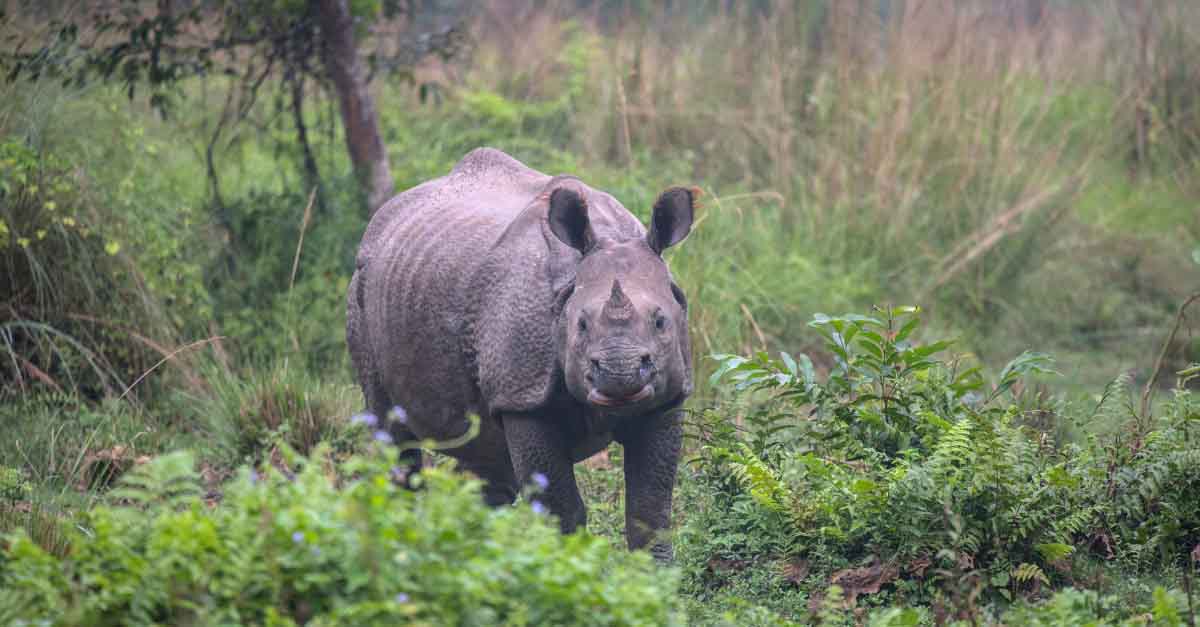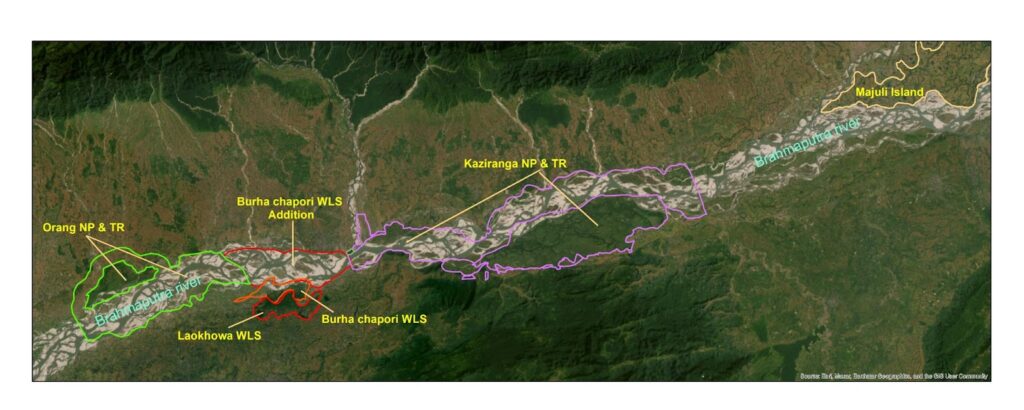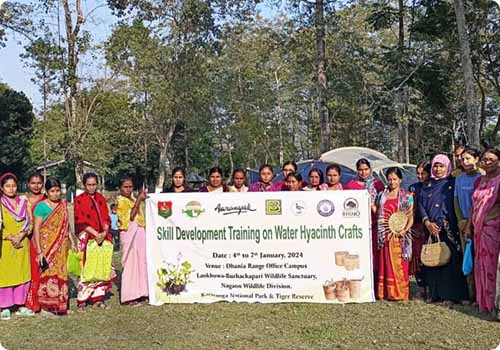Rhinos Return to Laokhowa and Burhachapori Wildlife Sanctuary

Greater one-horned rhinos have returned to Assam’s Laokhowa-Burhachapori Wildlife Sanctuaries (WLS). This is the first time this imperiled species has been seen there since they were poached to local extinction in the 1980s. Two rhinos entered the area in December 2023 and have since settled nicely into their new habitat and are being monitored closely by the forest staff of Laokhowa and Burhachapori WLS.
The new residents found their way into Laokhowa-Burhachapori a year after the Assam government finalized the addition of approximately 200 sq km to Orang National Park in north-central Assam and cleared the area of encroachers in 2023. This initiative connected Orang National Park to Burhachapori Wildlife Sanctuary and created a linked corridor of protected rhino bearing areas from Orang National Park to Kaziranga National Park through Laokhowa and Burhachapori WLS. The rhino corridor was created to facilitate the natural movement of rhinos to enhance gene flow. With intended translocations in the preparatory stage, the “natural” dispersal of these rhinos into this new safe habitat is a welcome surprise.

An intended outcome of Indian Rhino Vision 2.0 (IRV2.0), a vision which aims to secure and manage a minimum of three populations with a total “meta-population” of 4,500 – 5,000 greater one-horned rhinos in Assam by 2030, is to establish a new rhino population of at least 20 rhinos in Laokhowa-Burhachapori WLS. The animals would be sourced from nearby Kaziranga and Pobitora over the next few years, however these two rhinos in their new habitat bring us closer to that goal.
With rhinos back in the area, engaging local communities and providing benefits through rhino conservation is crucial to the prolonged safety and security of the new rhino habitat and the rhinos that live there. In 2022, IRF and local partner – Aaranyak conducted assessments with 190 community members in 12 villages around Laokhowa and Burhachapori WLS. The purpose of the assessments was to gain an understanding of local community members’ challenges and needs. The completed surveys indicated that the majority of respondents farm or rear livestock as their income source. The challenges they face include human-animal conflict, poor road conditions, flooding and erosion. Community members indicated that they would benefit from training on farming, weaving, tailoring and fishing to bolster their skills and knowledge.

Earlier this month, Dr. Bibhab Talukdar, IRF’s Senior Advisor of Asian Rhinos who is the Secretary General of the Indian NGO Aaranyak guided Arif Hussain of Aaranyak, along with an invited resource person, to successfully complete a 5 day skills development training on Water Hyacinth crafts at the Dhania Range campus of Burhachapori WLS.
Water hyacinth crafts use the dried stems of the plant which are woven into bags, shoes and other accessories. The training introduces and teaches the craft as a sustainable alternative source of income for the local community while also benefiting rhinos and their habitat as the community helps to remove this invasive plant species from the area.
“Laokhowa and Burhachapori WLS have the potential to house more than 100 greater one-horned rhinos in years to come through proactive habitat management and ensuring stringent protection. I am very grateful to the Assam Government for adding new areas to Orang NP, Burhachapori WLS and Kaziranga NP which has led to connectivity that has already started the dispersal of wild animals like tigers, rhinos and elephants within these four protected areas in Brahmaputra valley in Assam” said Dr. Bibhab Talukdar.
These rhinos jump started a new rhino population in Laokhowa-Burhachapori and are a testament to the work that has been done by local governments and community organizations to strengthen monitoring and law enforcement capabilities, build necessary infrastructure and engage and partner with the local community to ensure those who live alongside rhinos benefit from and support rhino conservation efforts.
